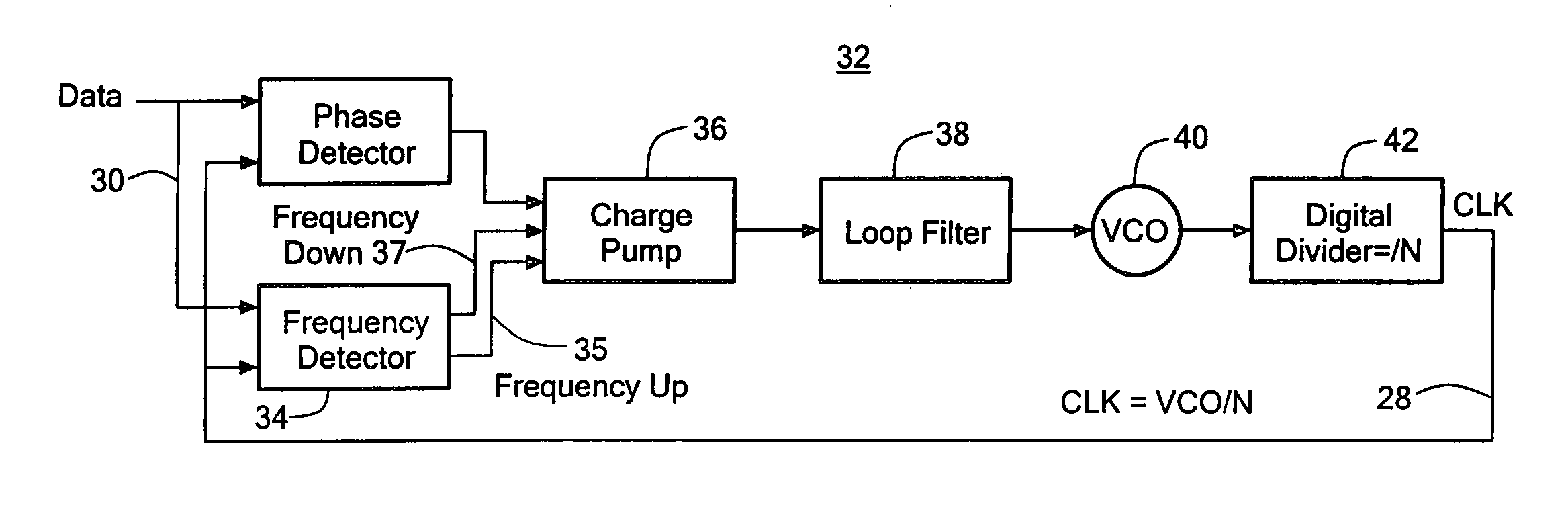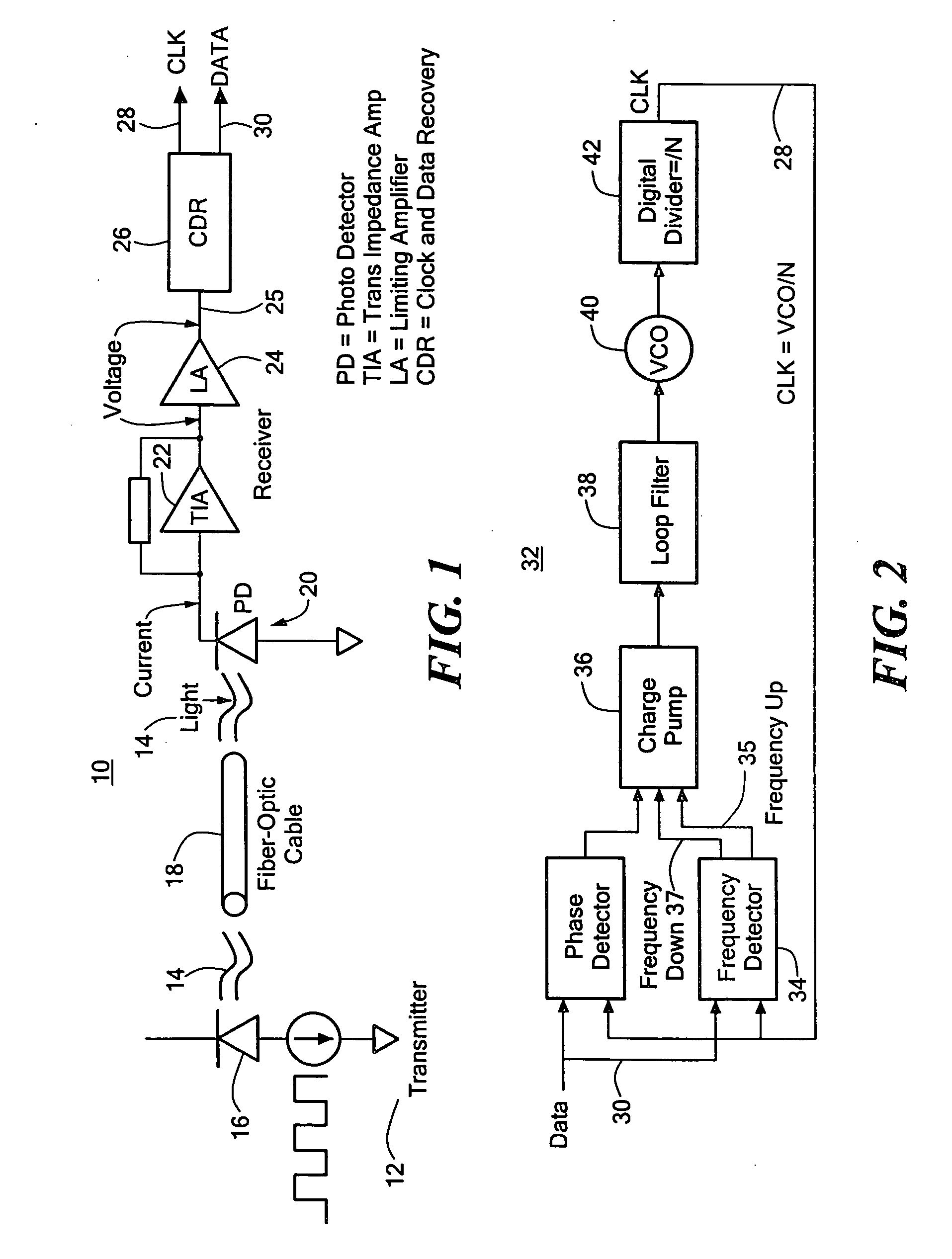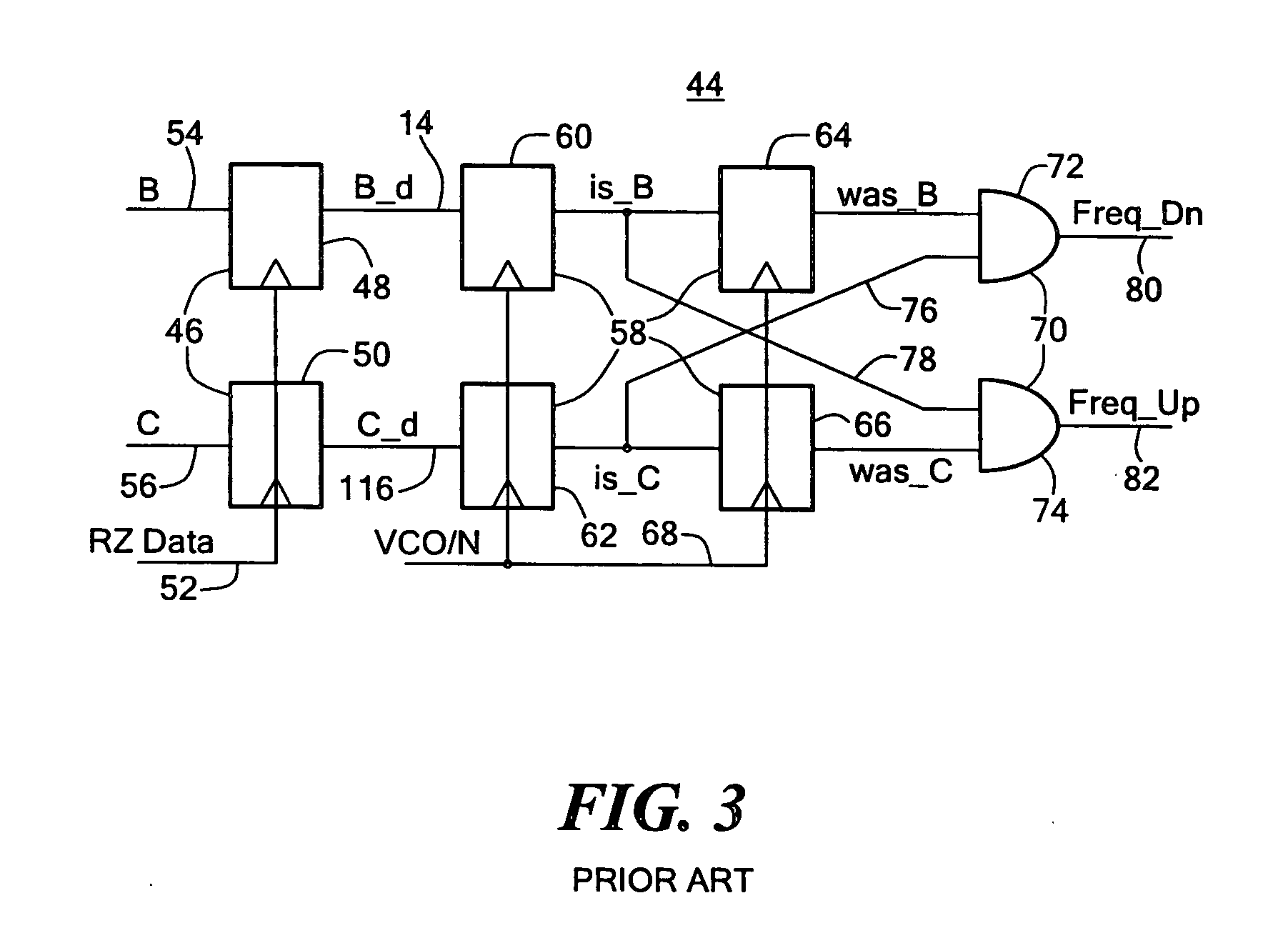Rotational frequency detector system
a detector system and rotational frequency technology, applied in the field of rotational frequency detector systems, can solve the problems of small frequency step size produced by the vco, overwork of the charge pump requiring a higher speed and more complex design of the charge pump, and the frequency up or down signal produced by the prior art rfds is very small, so as to reduce the acquisition time, eliminate false locking, and increase the operating range of normalized frequency errors.
- Summary
- Abstract
- Description
- Claims
- Application Information
AI Technical Summary
Benefits of technology
Problems solved by technology
Method used
Image
Examples
Embodiment Construction
[0042] Aside from the preferred embodiment or embodiments disclosed below, this invention is capable of other embodiments and of being practiced or being carried out in various ways. Thus, it is to be understood that the invention is not limited in its application to the details of construction and the arrangements of components set forth in the following description or illustrated in the drawings.
[0043] As discussed in the Background section above, fiber optic communications link 10, FIG. 1 typically includes transmitter 12 to transmit and direct light 14 emitted from laser diode 16 through fiber optic cable 18. At the receiving end of fiber optic cable 18 light 14 is detected by photodetector 20 which converts light 14 into an electrical current. The current is converted to a voltage by transimpedance amplifier 22 and then amplified by limiting amplifier 24. The limited and amplified signal on line 25 is then applied to clock and data recovery circuit 26 which extracts a clock si...
PUM
 Login to View More
Login to View More Abstract
Description
Claims
Application Information
 Login to View More
Login to View More - R&D
- Intellectual Property
- Life Sciences
- Materials
- Tech Scout
- Unparalleled Data Quality
- Higher Quality Content
- 60% Fewer Hallucinations
Browse by: Latest US Patents, China's latest patents, Technical Efficacy Thesaurus, Application Domain, Technology Topic, Popular Technical Reports.
© 2025 PatSnap. All rights reserved.Legal|Privacy policy|Modern Slavery Act Transparency Statement|Sitemap|About US| Contact US: help@patsnap.com



